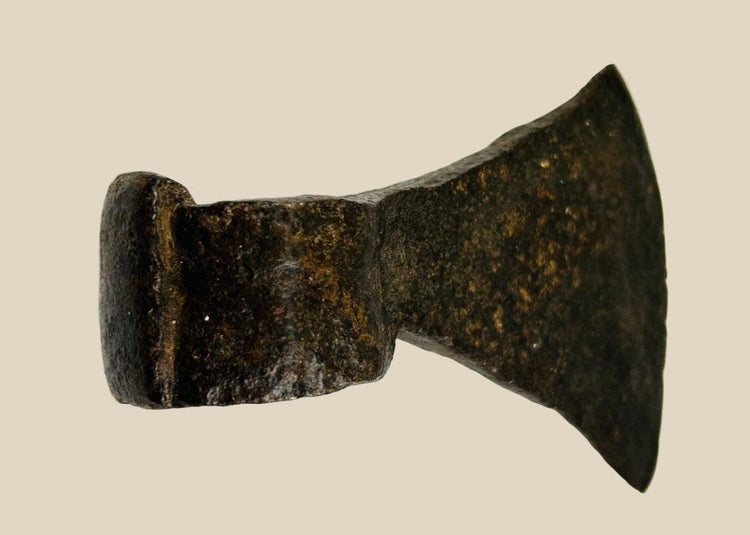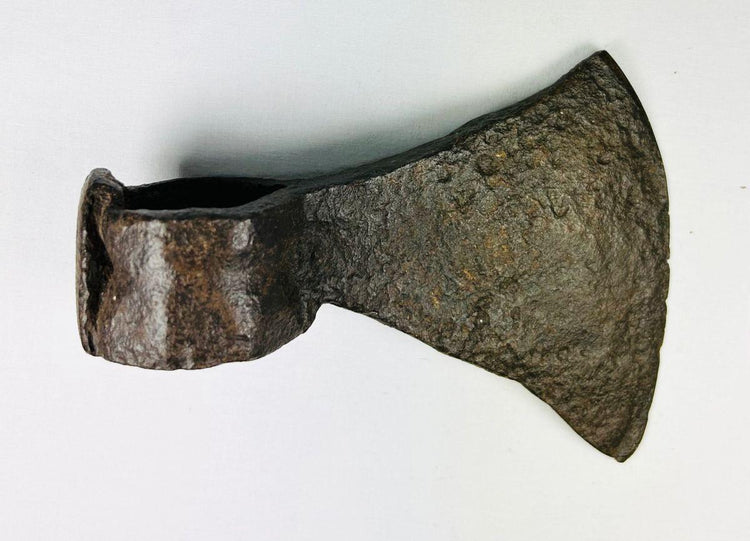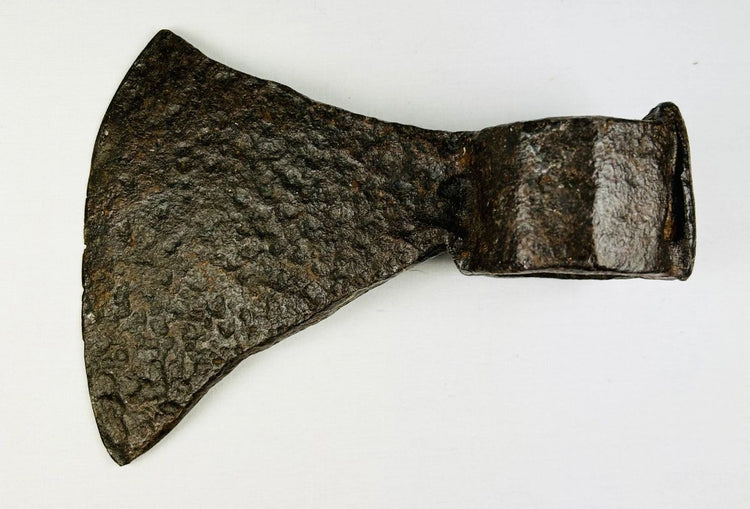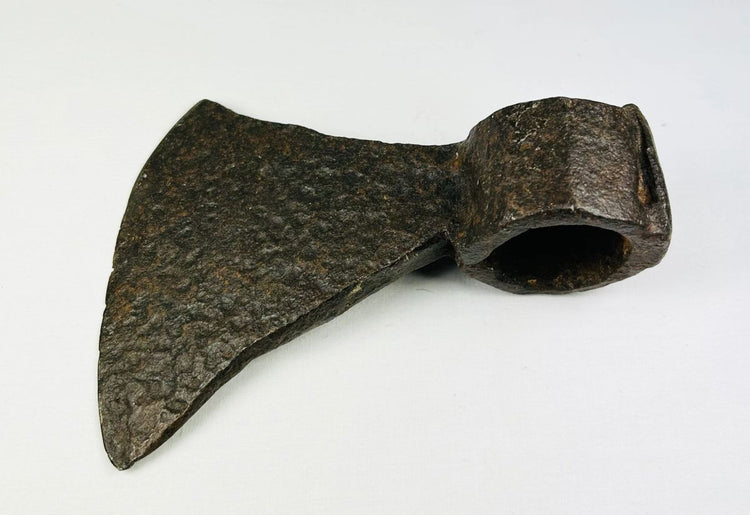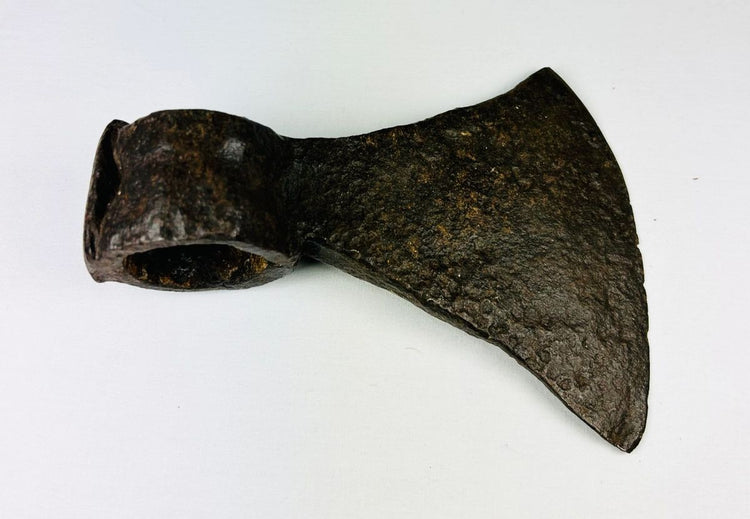Forged Iron Axe Head | Early American Settler’s Tool | 19th Century CE
Description
More
Less
Historical Context & Origin
Region: United States
Material: Forged iron
Period: 19th Century CE
Description
This forged iron axe head represents the durability, practicality, and ingenuity of early American craftsmanship. Dating to the 19th century, during a time of rapid expansion and settlement, axes such as this were indispensable tools for frontier life. Compact yet powerful, it was designed for chopping wood, cutting timber, and aiding in the construction of homes and settlements, playing a vital role in daily survival and community growth.
Features
- Wide forged blade suited for heavy-duty timber work
- Robust socket for securing a wooden haft
- Rich patina and textured surface consistent with age and long use
- Compact yet sturdy form, exemplifying practical 19th-century design
Cultural Significance
The axe was one of the most important tools of early American life, symbolizing resilience, resourcefulness, and expansion. Essential for clearing land, building homes, and providing fuel, it was not just a tool but a cornerstone of survival and progress in a challenging environment. This axe head reflects the pioneering spirit of early settlers and their reliance on well-crafted, durable implements.
Condition
The axe head shows a stable, age-darkened patina with natural wear from extensive use, affirming its authenticity and working history. Despite this, the piece remains structurally intact, a testament to the robust craftsmanship of 19th-century blacksmiths.
Dimensions (approximate)
Length: 5.75 in
Age
19th Century CE
Learn More
Explore the Untold Story of the Axe Through the Ages
Discover Our Extensive Selection of Historic Axes
Description
Historical Context & Origin
Region: United States
Material: Forged iron
Period: 19th Century CE
Description
This forged iron axe head represents the durability, practicality, and ingenuity of early American craftsmanship. Dating to the 19th century, during a time of rapid expansion and settlement, axes such as this were indispensable tools for frontier life. Compact yet powerful, it was designed for chopping wood, cutting timber, and aiding in the construction of homes and settlements, playing a vital role in daily survival and community growth.
Features
- Wide forged blade suited for heavy-duty timber work
- Robust socket for securing a wooden haft
- Rich patina and textured surface consistent with age and long use
- Compact yet sturdy form, exemplifying practical 19th-century design
Cultural Significance
The axe was one of the most important tools of early American life, symbolizing resilience, resourcefulness, and expansion. Essential for clearing land, building homes, and providing fuel, it was not just a tool but a cornerstone of survival and progress in a challenging environment. This axe head reflects the pioneering spirit of early settlers and their reliance on well-crafted, durable implements.
Condition
The axe head shows a stable, age-darkened patina with natural wear from extensive use, affirming its authenticity and working history. Despite this, the piece remains structurally intact, a testament to the robust craftsmanship of 19th-century blacksmiths.
Dimensions (approximate)
Length: 5.75 in
Age
19th Century CE
Learn More
Explore the Untold Story of the Axe Through the Ages
Discover Our Extensive Selection of Historic Axes
You May Also Like
















